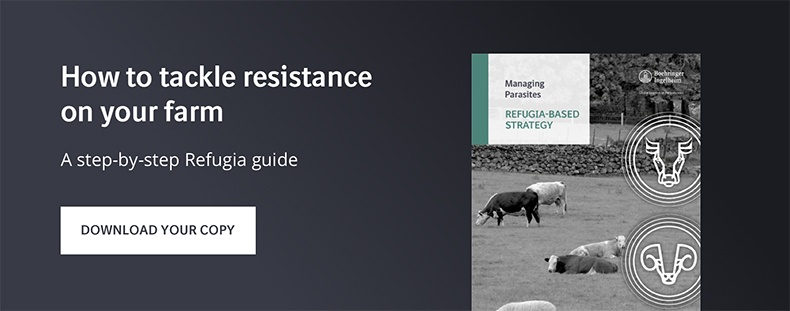Grassland management crucial in parasite control
Pasture is an important reservoir for production-limiting parasites, which makes pasture management a crucial part of parasite control. Grazing cattle may be exposed to infective parasites with every bite of forage they take, and failing to control them can have wide-ranging impacts on the health and welfare of cattle, and the profitability of livestock businesses.
How can parasites reduce performance?
Parasites cause youngstock to grow more slowly, reducing the performance and profitability of beef cattle, and preventing breeding heifers from reaching bulling weight at the most efficient time. In dairy herds, as well as impairing heifer efficiency, parasites also directly reduce milk yield and can impair reproductive rates, leading to reduced production across the herd.
Control practices need to be put in place
The goal of parasite control in cattle at pasture is not to eliminate parasites entirely, but to use sustainable control practices to reduce the parasitic load in animals. This should minimise the impact on cattle productivity, while avoiding strategies which encourage the development of wormer resistance.
1. What parasites are present?
Find out what parasites are present on your farm, so you can understand the risk and implement the most effective parasite control strategy.
Ask your vet or local animal health adviser to help you test cattle and identify the species present. The main ones to look out for are the gutworm species Ostertagia ostertagi and Cooperia spp., the cattle lungworm Dictyocaulus viviparus and the liver fluke Fasciola hepatica.
2. Rotate your cattle
Rotate cattle around your pasture, rather than continuously graze a single pasture or paddock, and move animals out of a pasture before the grass is eaten down to an extreme.
About 80 per cent of parasites are concentrated in the first 5cm of grass, so the closer to the ground cattle are eating, the more likely they are to ingest parasite larvae.
3. Reduce stocking density
Reduce stocking density on pastures. With fewer cattle per hectare, animals are less likely to graze near dungpats, where higher numbers of parasite larvae are likely to be found.
Mixed grazing with cattle, sheep or horses can also reduce contamination, but comes with other risks, so take advice from your vet or local animal health adviser before introducing mixed grazing for the first time.
4. Rest your pasture
Rest pasture by taking a silage or hay crop. This will disrupt parasite lifecycles because larvae will die without access to a host. Clean pasture, with no parasitic load, is very useful grazing for naive youngstock who have not yet built any immunity to gutworm or lungworm species.
5. Encourage refugia
Encourage pasture to be a source of refugia, where populations of parasites with different genes exist, including those which are resistant and susceptible to anthelmintics.
This will help slow the development of any resistance to wormers and support effective parasite control. You can do this by rotating treated and non-treated groups of animals around your pastures, or by leaving a percentage of cattle in a group untreated.
6. Weigh cattle regularly
Regularly weigh growing cattle. A parasite burden has been shown to slow growth rates. On average, cattle with a parasite burden spend less time grazing and ingest less forage than treated cattle. Individuals not making their weight gain targets should be selected for treatment. This allows untreated animals to act as a source of refugia, helping to slow the development of wormer resistance.
7. Test your cattle
Test cattle before treating for parasites. If you are unsure whether your cattle have a parasite burden, ask your vet to test the herd for the presence of gutworm or fluke, and treat according to the result. The type of test used will depend on the parasites being tested for and the age and history of the animals.
8. Treatment is crucial
Treat cattle strategically, in line with seasonal pasture use. If your cattle graze high-risk pasture you know carries a high parasite burden, you may treat cattle in line with expected infectivity periods.
The mid-summer rise in gutworm larvae on pasture means youngstock are likely to become infected by late summer and, as they have little or no immunity to worms, production loss may occur, as well as clinical disease.
9. Rethink your water sources
Avoid using rivers and streams for water sources. Try to use water tanks on dry ground, where it will not get heavily poached or waterlogged.
The mud snail, the intermediate host of liver fluke, is found in slow-moving water and muddy areas, so preventing animals from grazing near to high risk water sources will reduce the potential for infection.
10. Be prepared to act fast
Lungworm infections are normally found from July onwards. At the first sign of coughing, ask your vet to test the herd for lungworm. It can occur in adult cows as well as youngstock. Not all individuals will show symptoms.
For advice on parasites and parasite treatments, speak to your vet or animal health adviser.
